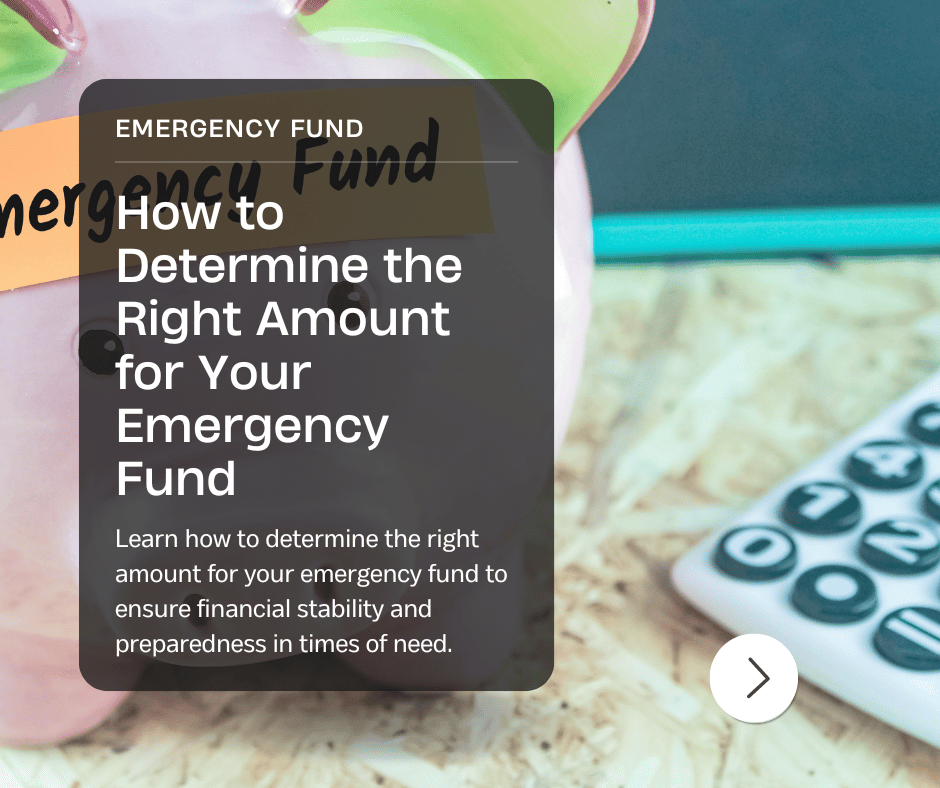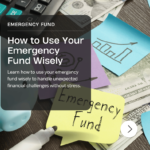Introduction
An emergency fund serves as a financial safety net that can provide you with peace of mind during unexpected situations. From sudden job loss to medical emergencies, having a cushion to fall back on is crucial. Understanding the appropriate amount to save in an emergency fund is essential to achieving financial stability and preparedness.
How to Determine the Right Amount for Your Emergency Fund
Initial Considerations
When determining the right amount for your emergency fund, start by considering your unique financial situation. The goal is to have enough saved to cover unforeseen expenses without dipping into your long-term investments or going into debt. This balance will depend on several factors, including your income, expenses, and personal circumstances.
The Role of Income Stability
Your income stability significantly influences the size of your emergency fund. If you have a stable, salaried job, you might feel comfortable with a smaller fund. However, if your income is irregular or commission-based, a larger emergency fund can provide more security during lean periods.
Evaluating Monthly Expenses
Accurately evaluating your monthly expenses is a critical step. Include all necessary costs such as rent or mortgage, utilities, groceries, transportation, insurance, and debt payments. Don’t forget to account for discretionary spending and any other regular outlays. This comprehensive view will help you establish a realistic baseline for your emergency fund.
Setting a Baseline for Your Emergency Fund
Three to Six Months’ Expenses
A common recommendation is to save three to six months’ worth of expenses. This range provides a buffer for most short-term emergencies, such as unexpected car repairs or temporary unemployment. The exact duration depends on your comfort level and financial situation.
Calculating Essential Costs
To set a baseline, calculate your essential costs. These are the expenses you must cover even in a crisis, like housing, utilities, and food. By focusing on these essentials, you can ensure your emergency fund is sufficient without being excessively large.
Considering Personal Circumstances
Your personal circumstances also play a role. Single individuals may require less than those with families. If you have dependents, pets, or specific health needs, factor these into your calculations. Tailoring your fund to your unique situation ensures you are adequately prepared.
Adjusting for Variables
Job Security
Consider your job security when setting your emergency fund goal. Those in stable industries might need less, while those in volatile fields may benefit from a larger fund. Assess the likelihood of job loss and the time it might take to find new employment in your field.
Health and Medical Expenses
Health and medical expenses can be unpredictable. If you have ongoing health issues or insufficient health insurance, increase your emergency fund to cover potential out-of-pocket costs. This consideration can prevent financial strain during medical emergencies.
Family Size and Dependents
Family size and dependents significantly impact your emergency fund needs. More dependents mean higher living costs, necessitating a larger fund. Consider each family member’s needs, from education to healthcare, when calculating the right amount.
Incorporating Lifestyle and Personal Preferences
Lifestyle Choices and Emergency Fund Needs
Your lifestyle choices also affect your emergency fund. If you prefer a higher standard of living, your fund should reflect that. Conversely, if you can easily cut back on non-essentials, a smaller fund may suffice. Your comfort with reducing expenses in a crisis will guide this decision.
Risk Tolerance and Emergency Fund Size
Your risk tolerance is another factor. Risk-averse individuals might prefer a larger fund for greater security. Those more comfortable with uncertainty might opt for a smaller fund, relying on their ability to adapt quickly. Assess your comfort level with financial risk when setting your goal.
Future Financial Goals and Planning
Consider your future financial goals. A larger emergency fund might delay other objectives, such as home buying or investing. Balance the need for immediate security with your long-term aspirations. This balance ensures you’re not sacrificing future growth for present safety.
Practical Tips for Building Your Emergency Fund
Starting Small and Building Up
Start with a modest goal, such as saving $1,000. Once you reach this milestone, gradually increase your target. Breaking the goal into manageable steps can make the process less daunting and more achievable.
Automating Savings
Automate your savings to build your emergency fund consistently. Set up automatic transfers from your checking to your savings account. This method ensures regular contributions without requiring conscious effort, helping you reach your goal faster.
Reducing Non-Essential Spending
Identify and reduce non-essential spending to boost your savings. Cut back on dining out, subscriptions, and other discretionary expenses. Redirect these savings into your emergency fund, accelerating your progress toward a fully funded cushion.
Where to Keep Your Emergency Fund
Savings Accounts
A high-yield savings account is a popular choice for emergency funds. These accounts offer easy access and earn interest, helping your savings grow over time. Ensure the account is FDIC insured to protect your funds.
Money Market Accounts
Money market accounts combine features of savings and checking accounts. They typically offer higher interest rates than regular savings accounts and allow limited check-writing capabilities. This option provides a balance between accessibility and growth.
Short-Term Investments
For those with a higher risk tolerance, short-term investments like certificates of deposit (CDs) or low-risk mutual funds can be considered. While these options may offer higher returns, ensure they still provide sufficient liquidity to access funds quickly in an emergency.
Reviewing and Adjusting Your Emergency Fund Over Time
Regularly Reviewing Your Fund
Periodically review your emergency fund to ensure it remains adequate. Life changes, such as new expenses or income adjustments, can impact your needs. Regular assessments help maintain the fund’s relevance and adequacy.
Adjusting for Life Changes
Major life events, such as marriage, having children, or buying a home, necessitate adjustments to your emergency fund. Update your savings goal to reflect these changes, ensuring continuous financial security.
Staying Flexible and Prepared
Flexibility is key in managing your emergency fund. Be prepared to adjust your savings as circumstances change. This adaptability ensures you remain financially prepared for any situation that arises.
Common Mistakes to Avoid
Underestimating Expenses
One common mistake is underestimating monthly expenses. Be thorough in your calculations, accounting for all necessary costs. Overlooked expenses can leave your fund insufficient in a crisis.
Over-Estimating Risk
While it’s important to be prepared, over-estimating risk can lead to an excessively large fund. This allocation might hinder other financial goals. Balance the need for security with realistic risk assessment.
Neglecting to Replenish After Use
If you need to use your emergency fund, prioritize replenishing it. Neglecting to do so can leave you vulnerable to future crises. Consistent contributions, even after using the fund, ensure continuous preparedness.
Emergency Fund Myths and Realities
Myths About Large Emergency Funds
Some believe that a large emergency fund is always necessary. In reality, the right size depends on individual circumstances. Tailoring your fund to your needs is more effective than following generic advice.
The Reality of Financial Preparedness
True financial preparedness is about having a well-considered plan. It involves regular reviews and adjustments to ensure your emergency fund remains relevant and adequate for your changing needs.
Conclusion
Determining the right amount for your emergency fund is a personalized process that balances security with practicality. By considering your income, expenses, personal circumstances, and future goals, you can create a fund that provides peace of mind and financial stability. Start building your emergency fund today, and enjoy the confidence that comes with being financially prepared for the unexpected.
FAQs
What is an emergency fund?
An emergency fund is a savings account set aside for unexpected expenses, such as medical emergencies, car repairs, or job loss. It provides financial security during unforeseen events.
How much should I save in an emergency fund?
A common recommendation is to save three to six months’ worth of expenses. However, the exact amount depends on your financial situation, job stability, and personal circumstances.
Where should I keep my emergency fund?
A high-yield savings account is a popular choice for emergency funds due to its easy access and interest-earning potential. Money market accounts and short-term investments are also options.
How do I start building an emergency fund?
Start by setting a modest goal, such as $1,000, and gradually increase it. Automate your savings and reduce non-essential spending to boost your progress.
What expenses should be covered by an emergency fund?
Emergency funds should cover essential expenses, such as housing, utilities, food, transportation, insurance, and debt payments. Consider including discretionary spending based on your lifestyle.
How often should I review my emergency fund?
Review your emergency fund periodically, especially after major life changes. Regular assessments help ensure your fund remains adequate and relevant to your needs.


